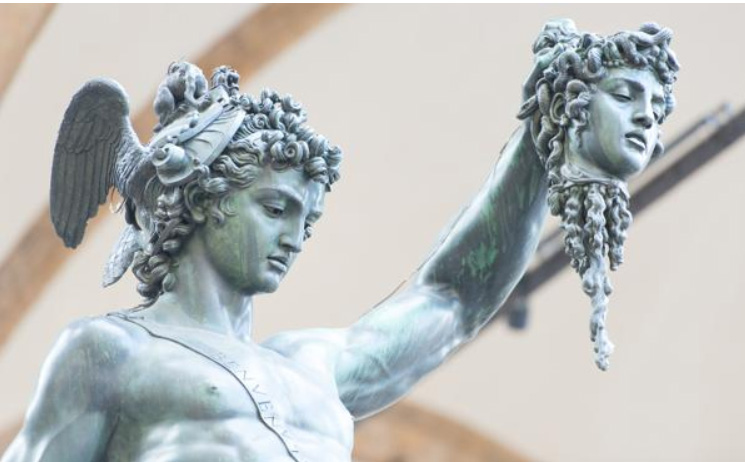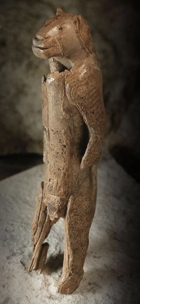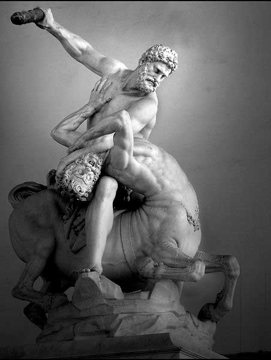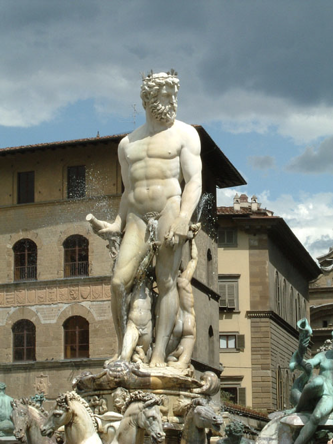“Renaissance Influence on Sculpting”

“Every block of stone has a statue inside it and it is the task of the sculptor to discover it. I saw the angel in the marble and carved until I set him free.”
-Michelangelo
Sculptures are classified under the branch of visual arts that operates by working stone, metal, ceramics, wood and other materials into three-dimensional art objects. Sculptural processes are classified under three types: carving, modelling, or joining. Some of the most famous pieces of art found throughout history are sculptures, from Michelangelo’s David to the Statue of Liberty, this form of art has been extremely popular for thousands of years and is still prevalent all throughout the world. The art of sculpting has been around for hundreds of thousands of years, and evidence of certain sculptures have even dated back to before the emergence of the Neanderthals about 350,000 years ago during the Pleistocene Epoch. Although sculptures may not have looked the way we know them now, the art style has gone through many different changes in order to come to the point it has. Almost every corner of the world has adopted this form of art and tailored it to incorporate their own influence on it.
The Origins of Sculpting
Although there is controversy on this topic, it is believed that sculpting is one of the oldest forms of art even surpassing that of painting. While today, most sculptures are used to convey beauty, people used to sculpt forms to be used in rituals or that represented their spirituality. The oldest known figurative carving in the world can be dated back to 23,000 – 700,000 BCE. The Venus of Berekhat Ram was found in Israel in 1998 and depicts the figure of a female. It was found that the original tuff pebble had curves that resembled the body of a female, and a hominid carver had cut grooves around the neck and arms to enhance the figure. This object is the earliest example of representational art in the archaeological record, proving the art of sculpting even predates the evolution of modern humans.

Another early statue that was discovered is The Löwenmensch Statuette, dating back to 35,000 BC in Hohlenstein-Stadel, Germany. Löwenmensch means “lion human” in German, with the statue depicting a human figure with a feline face. It is believed to have been used in a ritual, as protection, or to ensure a good hunt. The carving has been estimated to have taken over 350 hours to finish, and since allocating time to finding sustenance was so crucial during this time, it suggests this was a very important artifact in the tribe. This statue also goes to show that spirituality and art were so important that there might have even been full-time artists being “employed” this long ago.
Devotional sculptures can be found in cultures across the world and throughout time, with sculptures as big as the Egyptian Sphinx created in 2500 BC to the gold miniatures in the pre-Columbian era (500 AD), many cultures had used this art practice for spiritual or religious purposes. The beginning of the Mesolithic in Europe marked a period of a reduction of figurative sculptures and a rise in relief art of practical objects until the Roman period emerged that really popularized the use of sculpting and catalyzed the shift to modern sculptures.
Sculpting Throughout Different Cultures
Egypt had served an important role in the change of style in sculpting. Egypt would not only depict people doing daily activities such that they appeared alive, but also used these statues to represent their gods, nobles, and rulers with the belief that their spirits could return to these statues. One of the most popular sculptures is the Great Sphinx, as opposed to The Löwenmensch Statuette which depicts the body of a man possessing the head of a lion, the Sphinx has the head of the pharaoh, Khafra, and body of a lion. It was carved out of limestone that sticks up above the desert floor, 65’ high and 240’ long. The statue was erected by Khafre’s father more than 4,500 years ago to guard the pyramid of Khafre at Giza.
This Egyptian style of naturalism had a profound impact on Greek art as it emerged in the 7th century. The emergence of trading stations in the Nile delta resulted in an increase of contact with eastern art and tradition leading to a shift from geometric art to a more natural form of art. The Greek introduction to Egyptian art and techniques influenced the poses and posture of their figural art.
In ancient Greek art, the Greek gods took appeared in a human form, which resulted in the human form being considered the most important subject in Greek art. Originally, Greeks followed Egyptian techniques and art styles rigidly as they carved very stiff and blocky figures in stone. As the Hellenistic period began to emerge, sculptors began to break away from the rigid Egyptian-influenced model and develop their own art style.
The conquest of Alexander the Great from 336 – 323 BC brought in the Hellenistic period in which Greek art and culture spread rapidly through his huge empire consisting of the eastern Mediterranean, Egypt, the Middle East, and parts of Asia. This period had a huge influence on the type of art that became popular, and this is mostly due to the type of material available. The Greek influence marked a shift into a more realistic, natural style especially with the change of material from stone to bronze and marble. Marble is much softer and easier to work with when is quarried and allowed famous statues that are still in great condition today to withstand the test of time because the material becomes hard and dense with time. This became the most popular material for great Greek and Italian artists. The medium of bronze allowed artists to introduce new subjects possessing realistic renderings of a variety of physical and emotional states. Bronze was so appealing to sculptures because of its tensile strength, reflective surface, and the ability to retain small details. Although more popular at the time, bronze deteriorates much quicker than marble and very few survive today. This gives the false impression to most that marble was the most commonly used medium in the ancient world for sculpting. The victory of Augustus over Mark Antony and Cleopatra in 31 BC marked the end of the Hellenistic era and the rise of the Roman Empire. Despite the end of this artistic period, the result of it had a lasting impact that changed the world of sculpting forever.
Historians believe that the Western traditional sculptures began in Ancient Greece, as artists began to move away from creating solely spiritual or religious statues towards capturing the beauty of the human form in bronze and marble. This shift in artistic style had a huge and lasting influence on all art created after, even now in the 21st century we are still seeing this impact as it inspires contemporary artists today.
The Influence of Christianity
Up until 325 AD, the Roman Empire was mainly polytheistic and sculptures were generally to honor their different Gods or certain members of nobility. As Emperor Constantine declared Christianity the official religion, a shift takes place on the subject matter of popular sculptures. Giant statues decreased in popularity and portraiture began to dominate the field of Roman sculpture. As the Gothic era expanded, religious sculptures on churches became more bigger and more elaborate. Biblical figures were shown in altarpieces and very high relief sculptures on and around the church.
At the time many people were not able to read or write, and the church needed a way to represent what was right and wrong in the eyes of the lord. They made use of figures in reminding the churchgoers of their faith, representing biblical scenes as a caution to what would be waiting in the afterlife for those who sinned.
The Renaissance
The term “Gothic style” refers to the style of European art during the 14th and early 15th century that served as a bridge by linking medieval Romanesque art with the Early Renaissance. The end of Christianity’s Gothic era marked the beginning of the Renaissance. A period in which a “rebirth” of classical learning and wisdom took place among European culture. It focused on the rediscovery of classical philosophy, literature and art. Emphasizing the idea that man was the center of his own universe, which manifested itself in the art that emerged from this period.
The renaissance marked the transition from darkness to light; from the dark ages which were a period of war, ignorance, famine, and pandemics to an era that brought “light” to new ideas and art. The movement began in Florence, due to the fact that this area has a rich cultural history and was home to many wealthy citizens that could afford to support budding artists. The well-known Medici family famously backed and funded the movement during their rule over Florence which lasted over 60 years.
This movement slowly expanded throughout Italy to Venice, Milan, Bologna, Ferrara and Rome. In the 15th century, it spread from Italy to France and then throughout western and northern Europe. The style of Renaissance art was characterized by realism and naturalism. For the first time in the history of sculpting, artists strived to depict people in a true-to-life way, and this style is still prevalent in modern art made today.
Famous Renaissance Sculptures

By far the most well-known sculpture throughout all of history is Michelangelo’s 14-foot masterpiece, David. The sculpture depicts David, before his infamous defeat of the giant Biblical warrior Goliath. It was originally commissioned for the Florence Cathedral, to be placed along its rooftop, but was instead placed in a public square.

Giambologna is one of the most important sculptors of the Late Renaissance. The works of Giovanni da Bologna, such as The Rape of the Sabine Woman and Hercules and the Centaur Nessus, can still be seen on the streets of Florence today. He trained in Antwerp before moving to Rome to study the Ancients and the work of Michelangelo until he settled in Florence to work for the Medici family.

While Bartolomeo Ammannati is more famous for his architecture, some of his sculpting work is still on display today. Situated in the Piazza della Signoria, the Fountain of Neptune is one of Ammannati’s most famous pieces of work that stands today. Commissioned by Cosimo I de’ Medici in 1559 to celebrate the marriage of Francesco de’ Medici I to the Grand Duchess Joanna of Austria, it depicts the God of the sea, Neptune, accompanied by other groups of marine deities.
Modern Sculptures
The Renaissance is believed by historians to be the bridge between the Middle Ages and modern-day civilization. The Renaissance changed the world in just about every way: from artistic style to new lines of thinking. In it, a humanist philosophy was reflected, new perspectives were developed, artists made use of light and shadows, and the focus of art shifted to focus on the beauty of human anatomy. A new desire emerged as sculptures sought to etch the beauty of the world as it really was into marble and bronze.
The Renaissance is considered one of the most influential phases in art history. This period introduced the new idea of focusing on the significance and beauty of the human body to art. It paved the way for modern sculptures created in our western culture: the style, material, symbolism of the sculpture, and techniques used. The realism and naturalism that sparked in the renaissance is still very prevalent in sculptures being created today. Despite starting on the other side of the world so long ago, the influences the Renaissance has had on not only sculpting in America, but the entire art world has been revolutionary.
Sources
Daunt, Julie. “14 Powerful Sculptures around the World.” Culture Trip, The Culture Trip, 19 Aug. 2015, theculturetrip.com/africa/articles/the-14-most-breathtaking-sculptures-around-the-world/.
“History of Italian Renaissance Sculpture.” HiSoUR, 22 Apr. 2019, http://www.hisour.com/history-of-italian-renaissance-sculpture-33335/#:~:text=The%20sculpture%20of%20the%20Italian,humanism%20and%20rationalism%2C%20developed%20a.
“The History of Sculpture: Event: Royal Academy of Arts.” Event | Royal Academy of Arts, http://www.royalacademy.org.uk/event/courses-classes-history-of-sculpture-art-theory.
“History of Sculptures.” Skulpturhalle, http://www.skulpturhalle.ch/history/.
History.com Editors. “Renaissance.” History.com, A&E Television Networks, 4 Apr. 2018, http://www.history.com/topics/renaissance/renaissance.
“Lion-Man.” Wikipedia, Wikimedia Foundation, 12 Mar. 2022, en.wikipedia.org/wiki/Lion-man.
“Relief Art.” Wikipedia, Wikimedia Foundation, 5 Apr. 2022, en.wikipedia.org/wiki/Relief.
“Renaissance Sculpture from Florence and Rome.” Italian Renaissance Art.com, http://www.italian-renaissance-art.com/Renaissance-Sculpture.html.
“Sculpture in Western Art.” Working with Sculpture (Education at the Getty), http://www.getty.edu/education/teachers/classroom_resources/curricula/sculpture/background1.html#:~:text=The%20earliest%20known%20works%20of,possible%20spiritual%20or%20religious%20purposes.
“Sculpture.” Wikipedia, Wikimedia Foundation, 24 Apr. 2022, en.wikipedia.org/wiki/Sculpture#Prehistoric_periods.
“Venus of Berekhat Ram.” Wikipedia, Wikimedia Foundation, 11 Apr. 2022, en.wikipedia.org/wiki/Venus_of_Berekhat_Ram.
“A Very Brief History of Sculpture.” SamsOriginalArt, 12 Dec. 2020, samsoriginalart.com/a-very-brief-history-of-sculpture/.